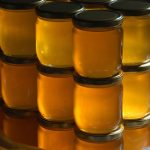Top Essential Features to Consider When Choosing a Modern Cooktop
When it comes to outfitting your kitchen with a new cooktop, the choices can be overwhelming. Whether you’re leaning towards induction, electric, or gas, each type of cooktop has its unique set of features that can make or break your cooking experience. Here’s a comprehensive guide to help you navigate the key features you should consider when choosing a modern cooktop.
Understanding Your Cooking Needs
Before diving into the specifics of each cooktop type, it’s crucial to understand your cooking habits and needs. Here are a few questions to ask yourself:
Also to read : Top UK Kitchen Appliance Brands with Outstanding After-Sales Support: A Comprehensive Guide
- How often do you cook? If you’re an avid cook, you’ll want a cooktop that can handle frequent use without compromising performance.
- What type of cookware do you use? Different cooktops are compatible with different types of cookware, so this is an important consideration.
- Do you prioritize energy efficiency? If reducing your energy consumption is a goal, certain types of cooktops are more energy-efficient than others.
Cooktop Types: Induction, Electric, and Gas
Each type of cooktop has its own set of advantages and disadvantages.
Induction Cooktops
Induction cooktops are gaining popularity due to their efficiency, safety, and precise temperature control.
Also to see : Top UK Kitchen Appliance Brands with Outstanding After-Sales Support: A Comprehensive Guide
How Induction Cooktops Work:
Induction cooking operates by using electromagnetic fields to directly heat the cookware. This method bypasses the need to heat the cooktop itself, resulting in faster cooking times and minimal heat loss.
Key Features:
- Energy Efficiency: Induction cooktops are highly energy-efficient because the heat is generated directly in the cookware, reducing energy waste.
- Safety Features: The cooking surface remains cool to the touch, making it safer than traditional electric or gas stoves.
- Precise Temperature Control: Induction cooktops offer precise temperature control, allowing for delicate cooking tasks like melting butter or chocolate.
- Cookware Compatibility: Induction cooktops require ferromagnetic cookware, such as enameled steel, cast iron, or stainless steel designed for induction cooking.
Example:
The GE Profile 30 in. 4 Burner Element Smart Smooth Induction Touch Control Cooktop is a popular choice. It features a sleek design, quick heating, and easy cleaning. It also includes features like a control lockout, digital display, and pan presence sensor, making it a versatile option for modern kitchens.
Electric Cooktops
Electric cooktops are known for their ease of use and sleek designs.
Key Features:
- Cooking Surface: Electric cooktops often feature a smooth, ceramic-glass surface that is easier to clean and heats more evenly than traditional coil elements.
- Element Sizes: Look for cooktops with elements in a range of sizes to accommodate different pot and pan sizes. A large element (at least 10 inches in diameter) and a smaller, lower-power simmer burner are essential.
- Adaptable Zones: Some electric cooktops offer adaptable or flex zones, allowing you to adjust the element size to match your cookware, which is more efficient and reduces unnecessary heat.
- Safety Features: Electric cooktops often include features like indicator lights for heating elements and hot surface indicators to enhance safety.
Example:
When choosing an electric cooktop, consider the importance of element size and adaptability. For instance, the JB735 model from GE features flex-width elements that allow you to use different pot sizes on one burner, enhancing flexibility and efficiency.
Gas Cooktops
Gas cooktops are favored by many professional chefs due to their instant heat control and versatility.
Key Features:
- Instant Heat Control: Gas cooktops provide immediate heat adjustment, which is ideal for tasks that require quick temperature changes.
- Cooking Surface: Gas cooktops typically have an open flame, which can be more challenging to clean but offers a traditional cooking experience.
- Burner Variety: Look for gas cooktops with multiple burners, including a power burner, simmer burner, and possibly an oval burner for griddle or larger pans.
- Safety Features: While gas cooktops can be less safe than induction or electric due to the open flame, modern models often include safety features like automatic shut-off in case of an accident.
Example:
The Bosch 800 Series gas range is a great example of a modern gas cooktop. It features multiple burners, including a power burner and an oval burner, and comes with a warming drawer and clear, easy-to-read controls.
Cookware Compatibility and Safety
The type of cookware you use is crucial when choosing a cooktop.
Choosing the Right Cookware
- Induction Cooktops: Ferromagnetic materials like enameled steel, cast iron, or stainless steel designed for induction cooking are necessary. Non-ferromagnetic cookware will not be detected by the burner.
- Electric and Gas Cooktops: Most standard pots and pans are fine, but heavy-bottomed pans are recommended for even heat distribution. Avoid using excessively large or heavy pots that could damage the surface, especially on glass-topped electric stoves.
Tips for Safe Use:
- Avoid Mismatched Burners and Pots: Using a pot that is too small for the burner can waste energy and pose a burn risk. Always try to match the cooking zone to the minimum diameter of the pot’s bottom.
- Handle Cookware Carefully: On glass-topped stoves, gently place pans on the surface to avoid damage and cracks. Avoid sliding pans around the stovetop.
Energy Efficiency and Environmental Impact
Energy efficiency is a significant consideration for many homeowners.
Induction Cooktops
- Energy Efficiency: Induction cooktops are highly energy-efficient due to the direct transfer of heat to the cookware, minimizing heat loss.
Electric Cooktops
- Energy Efficiency: Electric cooktops can vary in efficiency, but models with adaptable zones and precise temperature control can help reduce energy waste.
Gas Cooktops
- Energy Efficiency: Gas cooktops generally consume more energy than induction or electric cooktops, especially if not used efficiently. However, some modern models include features that help reduce energy consumption.
Additional Features to Consider
When shopping for a cooktop, several additional features can enhance your cooking experience.
Smart Home Integration
- Smart Home Enabled: Some modern cooktops, like the GE Profile induction cooktop, are smart home enabled, allowing you to control and monitor your cooktop through a proprietary app.
Convection Cooking and Oven Features
- Convection Cooking: If you’re considering a range rather than a standalone cooktop, look for models with convection cooking modes. These modes use a fan to spread heat evenly, allowing for better results when baking or roasting.
- Oven Capacity and Racks: Ensure the oven has sufficient capacity (at least 5 cubic feet) and multiple rack settings for flexibility in cooking.
Self-Cleaning and Maintenance
- Self-Cleaning Options: Many modern ranges offer self-cleaning options, either through high heat or steam cleaning. These features can make maintenance easier and more efficient.
- Easy Clean Surfaces: Induction and electric cooktops often feature easy-to-clean surfaces. For gas cooktops, look for models with dishwasher-safe burner caps and grates.
Practical Insights and Actionable Advice
Here are some practical tips to keep in mind when choosing and using your cooktop:
Shop Smart
- Research Thoroughly: Before making a purchase, read reviews and compare different models to find the one that best fits your needs.
- Visit an Appliances Shop: Seeing the cooktop in person can give you a better feel for its features and usability.
Use the Right Cookware
- Invest in Quality Cookware: Heavy-bottomed pans with flat bottoms are ideal for even heat distribution.
- Avoid Incompatible Cookware: Ensure your cookware is compatible with your cooktop type to avoid inefficiencies and safety risks.
Maintain Your Cooktop
- Clean Regularly: Use non-abrasive cleaning products to maintain the surface of your cooktop.
- Follow Safety Guidelines: Always follow the manufacturer’s safety guidelines to ensure safe and efficient use of your cooktop.
Choosing the right cooktop for your kitchen is a significant decision that can impact your cooking experience, energy consumption, and overall safety. By understanding your cooking needs, considering the different types of cooktops, and paying attention to key features such as cookware compatibility, energy efficiency, and additional functionalities, you can make an informed decision that will enhance your kitchen experience.
Here is a summary of the key points to consider in a table format:
| Feature | Induction Cooktops | Electric Cooktops | Gas Cooktops |
|---|---|---|---|
| Cooking Surface | Glass Top, Cool to Touch | Smooth, Ceramic-Glass | Open Flame |
| Energy Efficiency | Highly Efficient | Varies, but adaptable zones help | Generally Less Efficient |
| Cookware Compatibility | Ferromagnetic Materials | Most Standard Pots and Pans | Most Standard Pots and Pans |
| Safety Features | Cool Surface, Precise Temperature Control | Indicator Lights, Hot Surface Indicators | Automatic Shut-Off, Open Flame Risks |
| Additional Features | Smart Home Integration, Pan Presence Sensor | Convection Cooking, Adaptable Zones | Convection Cooking, Multiple Burners |
| Maintenance | Easy Clean Surface | Easy Clean Surface | More Challenging to Clean |
By carefully evaluating these features and considering your specific needs, you can find the perfect cooktop to transform your kitchen into a culinary haven.
Detailed Bullet Point List: Key Features to Consider
- Cooktop Type:
- Induction: Energy-efficient, precise temperature control, cool surface.
- Electric: Smooth surface, adaptable zones, indicator lights.
- Gas: Instant heat control, multiple burners, open flame.
- Cookware Compatibility:
- Induction: Ferromagnetic materials.
- Electric and Gas: Most standard pots and pans, but avoid excessively large or heavy pots.
- Energy Efficiency:
- Induction: Highly efficient due to direct heat transfer.
- Electric: Varies, but adaptable zones can help.
- Gas: Generally less efficient, but modern models may include energy-saving features.
- Safety Features:
- Induction: Cool surface, precise temperature control.
- Electric: Indicator lights, hot surface indicators.
- Gas: Automatic shut-off, open flame risks.
- Additional Features:
- Smart Home Integration: Control and monitor through apps.
- Convection Cooking: Even heat distribution, better baking and roasting results.
- Adaptable Zones: Adjust element size to match cookware.
- Self-Cleaning Options: High heat or steam cleaning for easier maintenance.
- Maintenance:
- Induction and Electric: Easy-to-clean surfaces.
- Gas: More challenging to clean, but dishwasher-safe parts can help.
Quotes and Insights
- “Induction cooking offers numerous benefits, including faster cooking times, precise temperature control, energy efficiency, and safety features,” notes an expert from Sears Home Services.
- “Electric ranges often feature dual/triple electric elements that have multiple rings; this helps achieve a proper fit for many kinds of pots and pans,” explains Bree Lemmen from Chowhound.
- “Gas cooktops provide immediate heat adjustment, which is ideal for tasks that require quick temperature changes,” highlights Tom’s Guide.
By considering these essential features and insights, you’ll be well-equipped to make an informed decision when choosing your next cooktop, ensuring a safe, efficient, and enjoyable cooking experience in your kitchen.











